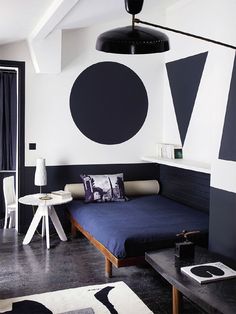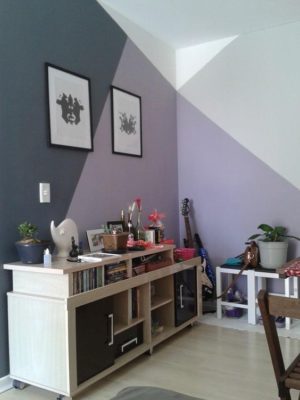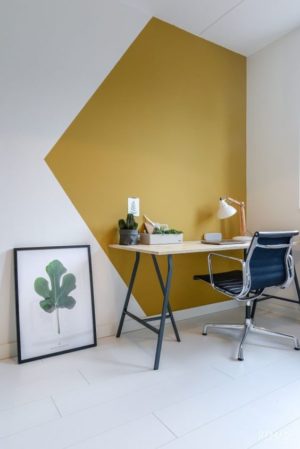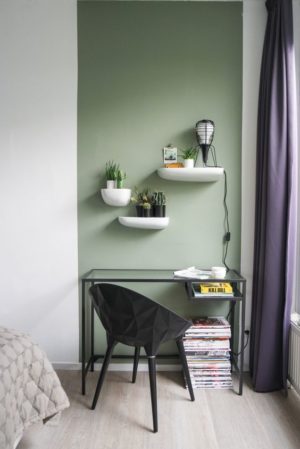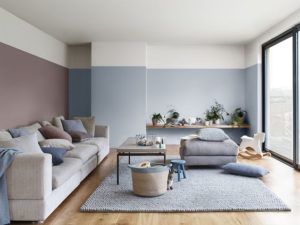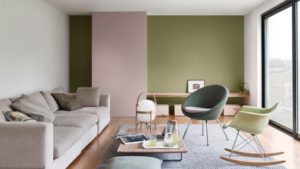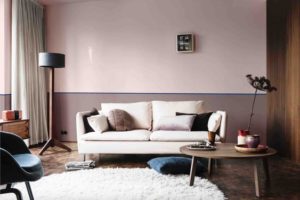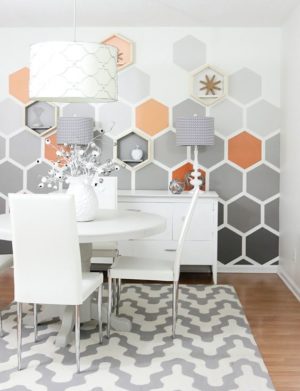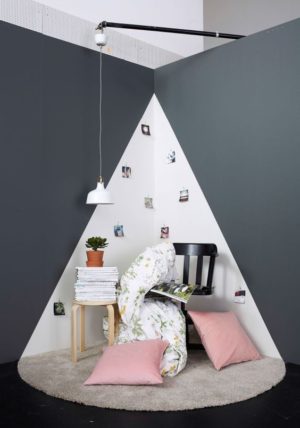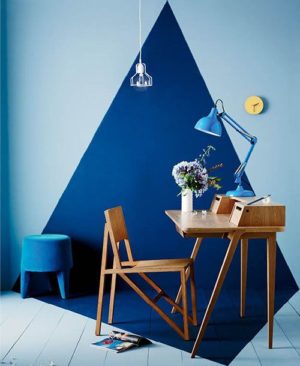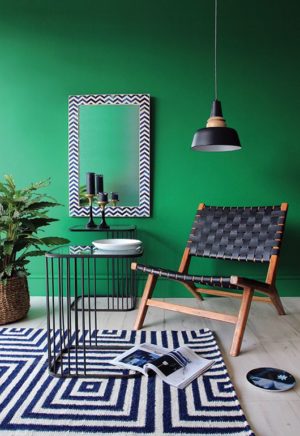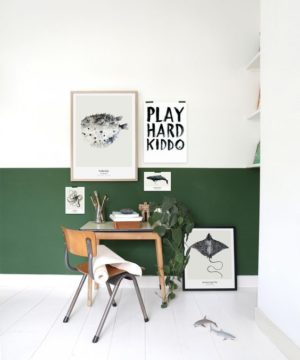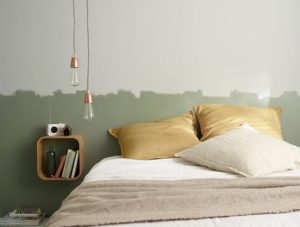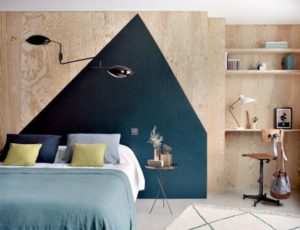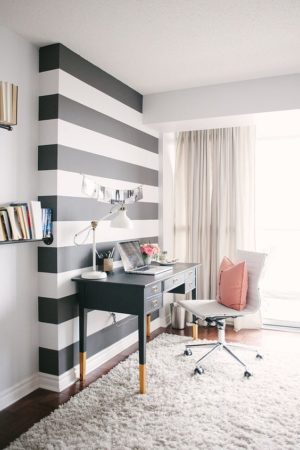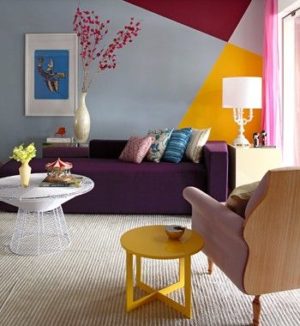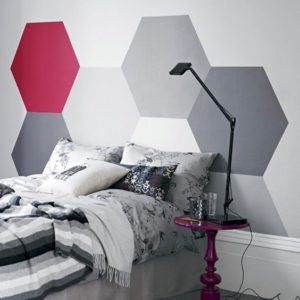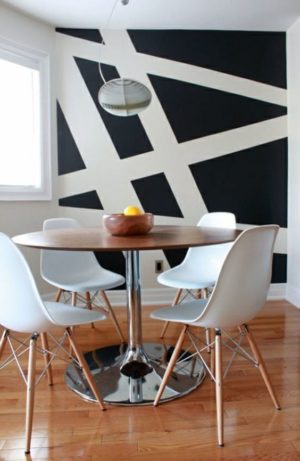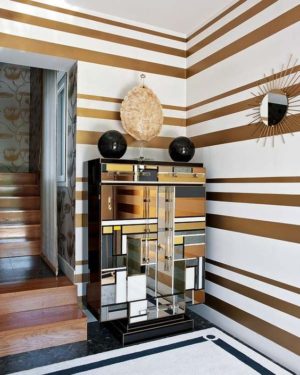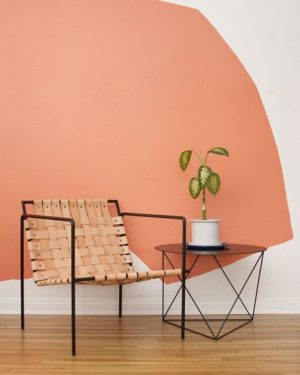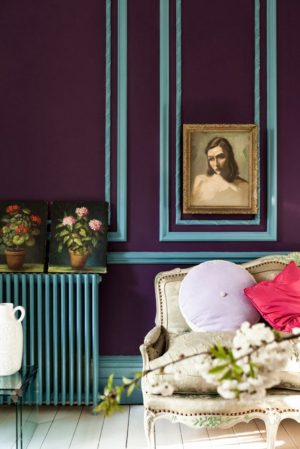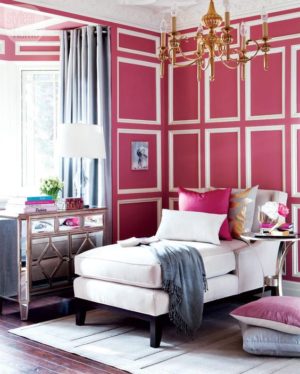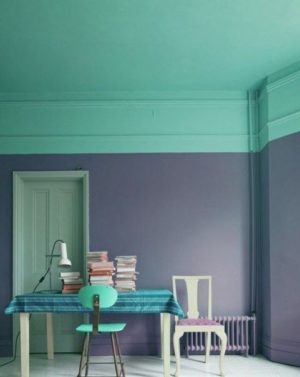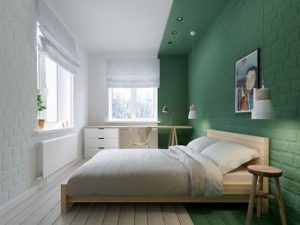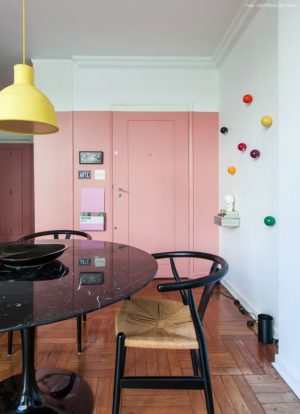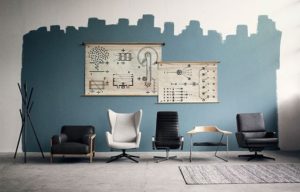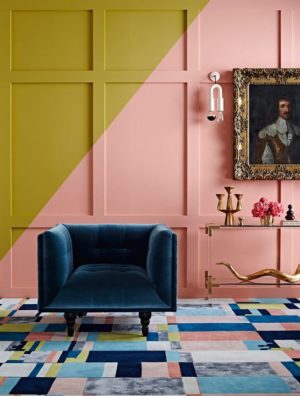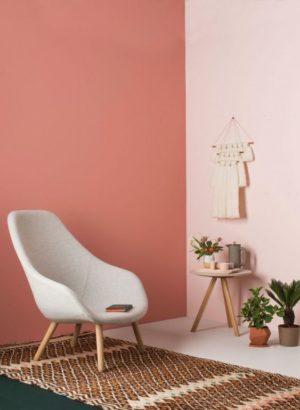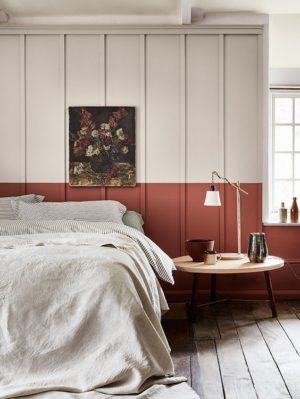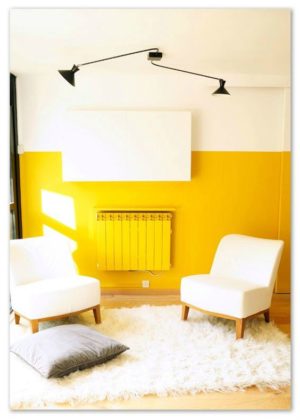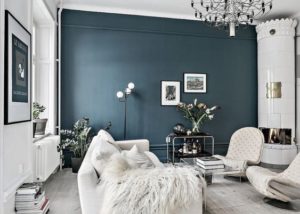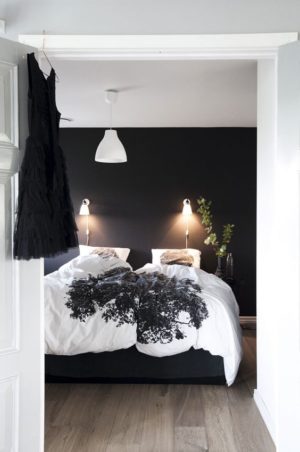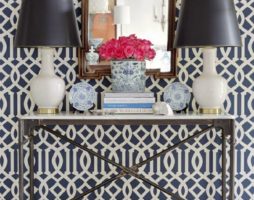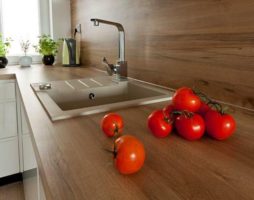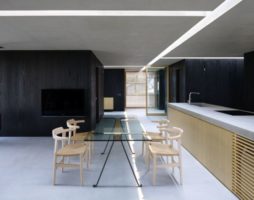If you want to unusually decorate the walls, it is advisable to use original paintwork materials. Decorative wall paint is ideal for interior decoration. She has a unique ability to create an original wall covering with a spectacular texture.
- Decorative wall paint: characteristics of features
- Classification of wall paint with decorative effect
- Features of alkyd type of paint
- Pros and cons of adhesive mixtures
- Distinctive features of water-based paint
- The need to use a textured roller
- Characteristics of flock and mosaic paint and varnish mixtures
- Advantages of wall decoration with textured paint
- The technology of using decorative paint for walls
- Variations in the design of decorative wall decoration
- Photo gallery - decorative wall paint
- Video
It allows not only to create a beautiful background for the interior painting in any color scheme. Without much effort and skills in painting, any admirer of non-trivial decorative solutions will finish the room with an imitation of silk, sand, wood, leather, stone or any other material. Decorative wall paint is indispensable in the process of painting and creating the effect of textured plaster. She embodies all sorts of ideas for decorating an apartment or house.
back to index ↑Decorative wall paint: characteristics of features
This type of paintwork material is produced by adding artificially created components in the form of metallized, stone, fabric and other particles to the composition. Depending on the type of paint, the composition is diluted with a specialized solvent. This determines the density and decorative appearance of the wall covering.
Among the huge variety of finishing materials for painting, decorative wall paint has the following advantages:
- safe for others due to the creation of a coloring composition from organic components;
- easy to apply using a roller, spray gun or brush;
- dries quickly;
- economical in consumption;
- resistant to moisture and direct sunlight;
- has a wide range with a variable color palette and a decorative effect;
- unpretentious in care.

Decorative paint has a wide range with a variable color palette
The coating has high moisture resistance. After the walls are completely dry, you can regularly carry out wet cleaning. Unlike wallpaper, finishing with decorative paint does not attract dust, and retains its original appearance for a long time.
In the event of cracks and any other flaws due to accidental mechanical impact or careless handling of pets, any defect on the wall can be easily eliminated. To do this, you need to buy finishing materials with a margin. Different batches of paints and varnishes may have slight differences in the form of color tone.
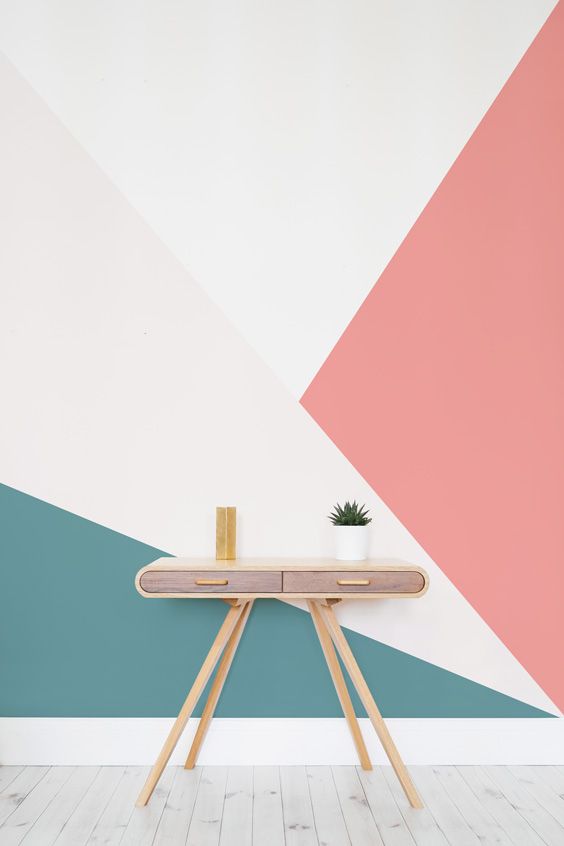
Decorative paint retains its appearance for a long time
Classification of wall paint with decorative effect
Depending on the composition, paints and varnishes are divided into different types:
- alkyd;
- adhesive;
- water-based;
- flock;
- mosaic;
- textured.
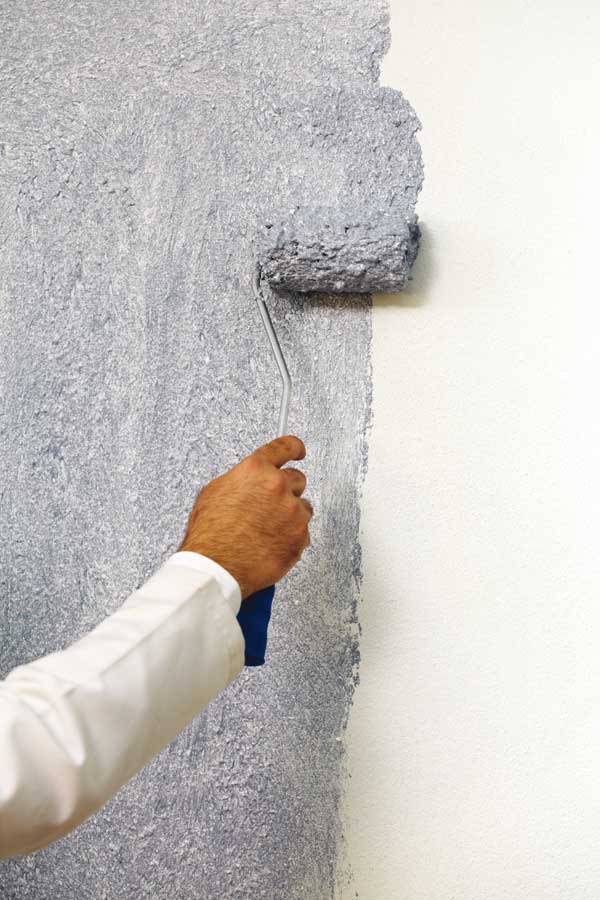
Application of textured decorative wall paint
Each of them has unique properties that should be considered when choosing a finishing material for interior wall covering.
back to index ↑Features of alkyd type of paint
Alkyd finishing materials are divided into two types: oil-based with a drying oil base and enamel with a high varnish content. The appearance of the wall depends on the base.
Decorative paint with linseed composition is made from artificial and natural oil bases - linen and sunflower. When using it, a beautiful coating with a shiny surface is obtained. It belongs to the budget segment of paints and varnishes. Oil mixtures have several disadvantages: they dry slowly, emit an unpleasant odor, and do not pass air well. Because of this, microcracks quickly appear on the coating.
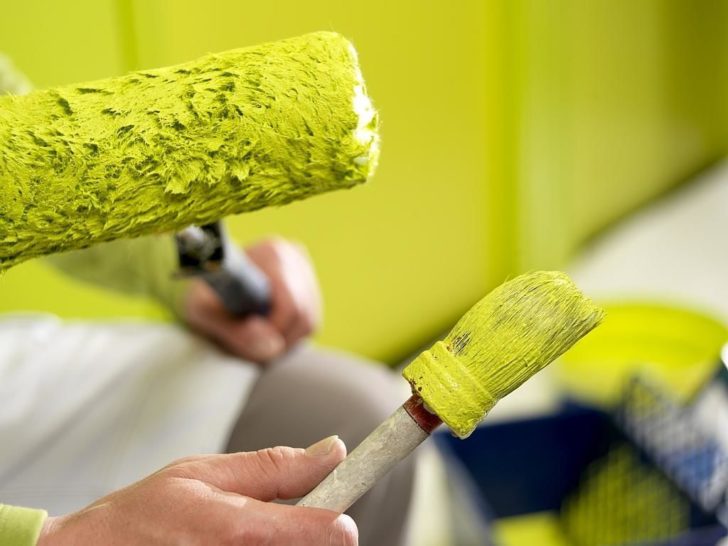
Decorative paint with linseed composition forms a glossy finish
Enamel compositions with a lacquer base form a film that shimmers in the light. They withstand moisture and sudden fluctuations in room temperature. They are rational to use when finishing the bathroom and kitchen, where there is high humidity and temperature fluctuations. It is produced in a variety of colors. If necessary, use a certain tone, the enamel mixture can be diluted with a solvent, obtaining any color gradation. After opening the package, it is able to maintain operational properties for a year.
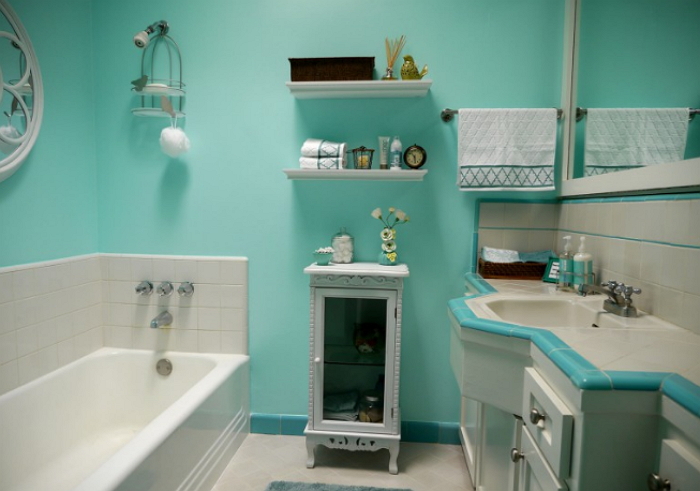
Enamel paints are rational to use for finishing the bathroom
Pros and cons of adhesive mixtures
Adhesive paints and varnishes are created by combining chalk, hot water, glue and color. They contain a large amount of water, causing excellent air exchange.
It is not recommended to use adhesive mixtures for finishing rooms with high humidity. The influence of moisture contributes to the formation of mold and mildew.
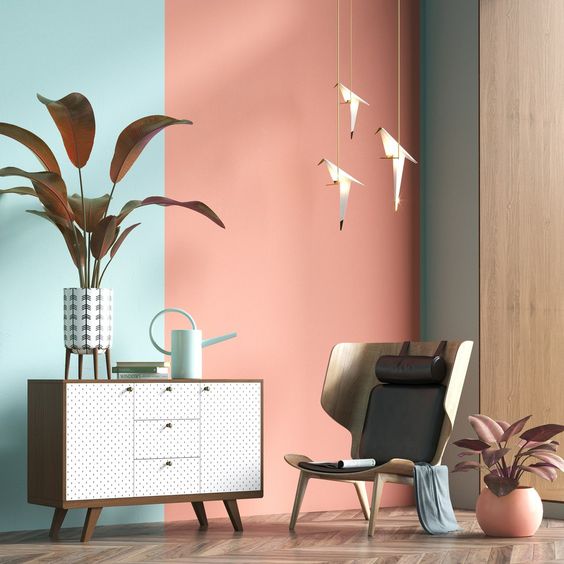
Adhesive decorative paint forms a matte surface
As a result of its use, a matte surface is formed on the walls. It is great for finishing concrete, brick and plaster walls. With frequent wet cleaning, the coating quickly loses color and the matte base is washed off.
back to index ↑Distinctive features of water-based paint
The production process uses water and polymer pigments. In the process of drying, the water completely evaporates and a perfectly even base is formed. During operation, it can be washed and wiped with a damp cloth or rag. It is strictly forbidden to use cleaning tools with an abrasive base and chemical detergents to care for painted walls. They violate the integrity and change the color of the coating.
The water-based composition has significant advantages:
- dries instantly;
- has a high degree of hypoallergenicity;
- does not emit a pungent odor;
- retains color when exposed to direct rays of light;
- easily acquires the desired color and tone when adding pigments.
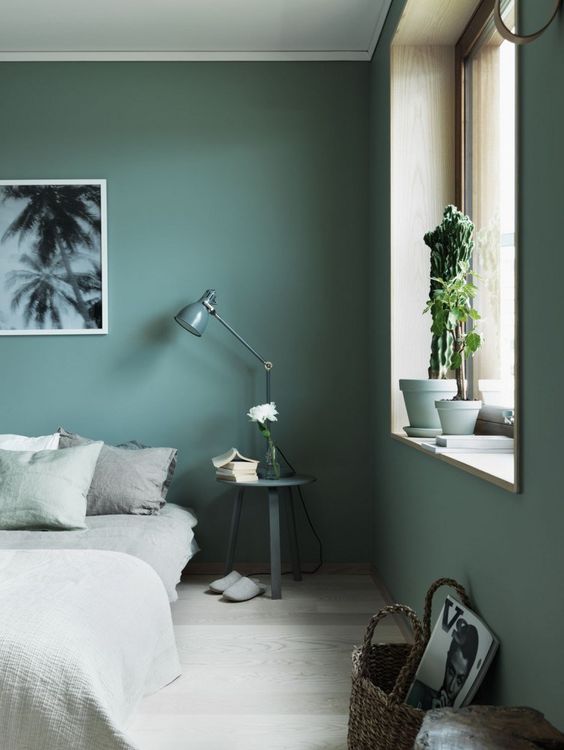
Water-based paint dries instantly and does not emit a pungent odor
Water-based paint for walls is divided into several types:
- acrylic due to the resinous composition forms a heavy-duty coating that perfectly withstands the negative effects of the environment;
- latex has a water-dispersion base, absolutely safe for the health of people and pets;
- silicate is made from a combination of liquid glass and coloring pigments that create a heavy-duty and breathable coating.
Regardless of the composition, water-based mixtures quickly acquire the desired tone when adding a color scheme of the desired color, are easily applied to the wall and have a high degree of wear resistance. Each type creates a different coating: matte, shiny, changing the color shade under the influence of artificial and natural light. The choice of finishing material should be based on individual requirements and design tasks.
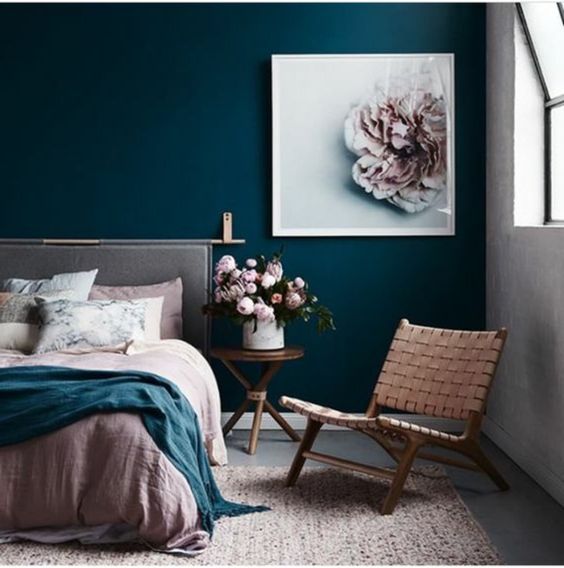
Water-based paint acquires the desired color when adding color
The need to use a textured roller
To evenly coat the walls with any of the above types of paint, it is important to use a brush, roller or spray gun. To create a patterned, ornamental or embossed surface, a textured or textured roller is indispensable. This painting tool has the design of a conventional roller, but is completed with a nozzle with an ornamental base. When exposed to a freshly painted wall, the textured roller leaves patterned prints.

Textured roller for a relief surface
Nozzles are made from different materials that create unique effects:
- leather is necessary when imitating the texture of granite, marble, sand or Venetian plaster;
- wooden with expressive patterns creates rectilinear reliefs in the likeness of finishing with canvases of equally designed wallpaper;
- rubber, depending on the shape, size of the recesses and bulges, imitates the effect of brick, tile or masonry;
- fabric with variable texture realistically convey the relief of crocodile or snake skin.
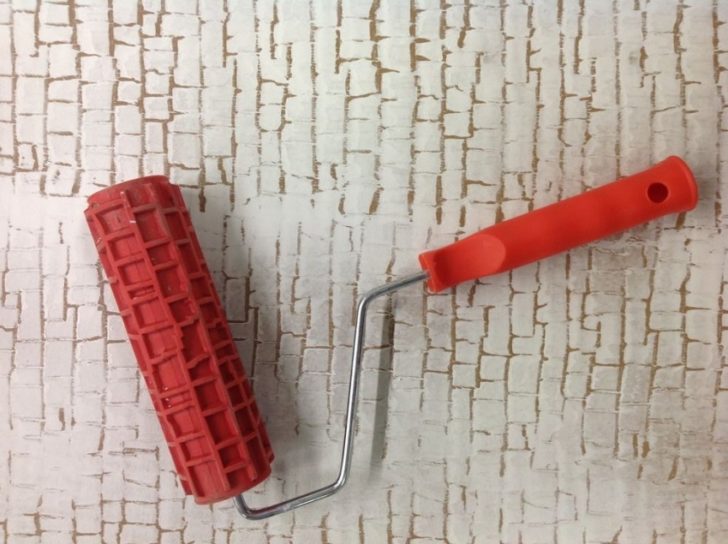
Textured roller conveys the relief of crocodile skin
Textured rollers with designer nozzles are necessary to give the walls a special look with a pronounced relief, executed in the form of foliage, frosty patterns or raindrops on glass. The depth of the ornamental design and the expressiveness of the patterns directly depend on the degree of pressure on the roller when decorating the walls. The use of conventional rollers in tandem with stencils helps to achieve an equally spectacular coating with beautiful patterns.

Roller for applying floral ornaments
Characteristics of flock and mosaic paint and varnish mixtures
Flock paints have a unique composition of heavy-duty glue, a variety of flakes of different colors, shapes and sizes. They must be applied in stages:
- a perfectly flat surface is covered with a layer of adhesive;
- using a specialized sprayer, a wall with an adhesive base is decorated with variational flocks in clearly marked areas or with a chaotic distribution;
- after the adhesive base dries, an acrylic varnish is applied, which fixes the flocks and gives a characteristic gloss to the surface.
A wide range of flock mixes allows you to perform a non-trivial looking finish that creates a festive entourage in the interior. They are great for masking any flaws on the walls: scratches or cracks can easily be hidden under a layer of decorative flakes.

Flock paints perfectly mask wall defects
Mosaic mixtures contain multi-colored granules of various shapes and structures. They form a bulk layer. Thanks to this feature, they can be used to mask any depressions and bulges on the walls. Ideal for creating original finishes. They ideally accurately copy the texture of shiny sequins, fleecy fabric and the texture of mosaic wall cladding with ceramic tiles of regular or asymmetric shape.
back to index ↑Advantages of wall decoration with textured paint
Textured finishing materials open up endless design possibilities when decorating walls. In accordance with the fashion trends in interior decor, using textured paint, you can create a surface imitating natural materials on any surface: stone chips, metal, wood, travertine, onyx, minerals, seashells and other organic bases.
The effect of natural texture is formed by adding characteristic components and artificially:
- to imitate marble and granite stone, the acrylic composition is saturated with oxygen, which contributes to the formation of a porous surface;

Decorative paint imitating stone surface
- to copy the texture of velvet and silk, the paint base is filled with solid particles with a fabric structure;

Decorative wall paint with velvet texture
- to create the effect of a metallized surface, the textured mixture is diluted with iron chips of gold, silver, copper and other colors.

golden surface effect
This type of finishing materials, forming a relief coating, is able to create a dynamic background for the interior picture due to the variable color scheme. A pearl base is easy to make using a mother-of-pearl mixture. To obtain an “antique” patinated surface, it is important to use the option with a metallic sheen to finish the base with specially created small cracks. For wall painting in a modern design style, you need to use paint mixtures with a luminescent property. They attract and retain natural light until dark. In the semi-darkness, the surface glows brightly and creates a bewitching spectacle.

Luminescent colors create a mesmerizing spectacle
The technology of using decorative paint for walls
In order for the new coating to look perfect after painting, it is necessary to perform preparatory work with high quality. Walls need to be carefully processed:
- It is ideal to clean the surface of wallpaper or old paint with a spatula or a wire brush.
- Remove switches and socketsby sealing the wires with thick cardboard or foam.
- Cover the irregularities with gypsum plaster.
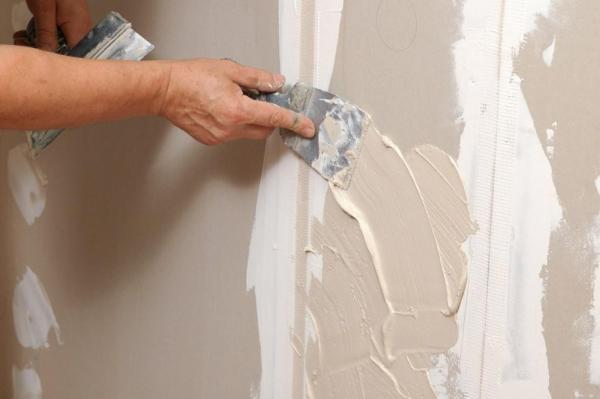
Eliminate irregularities with gypsum plaster
- Align when using finishing putty.
- Treat the surface with sandpaper.
- Prime.
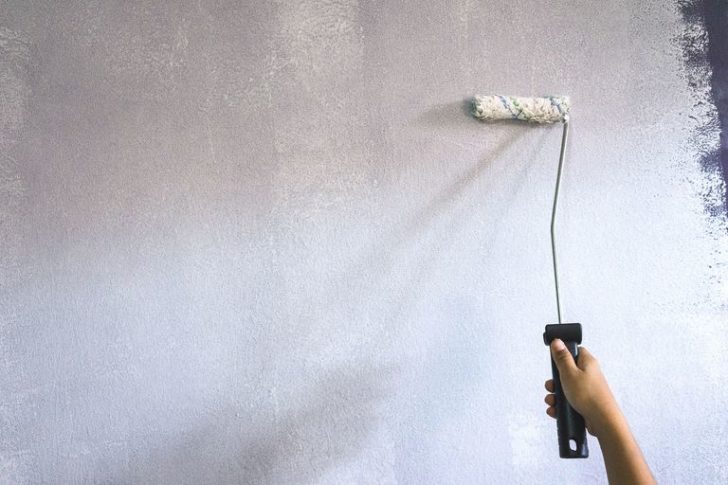
Coating the walls with a primer
Decorative wall paint with silk, sand, concrete or any other effect must be applied on a dry surface. The coating must be started from curved and hard-to-reach places: corners, ceiling borders, niches in the area of batteries. For finishing large-scale surfaces it is rational to use a roller. To paint ledges or corners, you must use a brush with natural bristles.

Use a roller to finish large surfaces
The technology of applying decorative paint depends on its basis and the desired effect. In almost any case, its use involves applying a double layer of the mixture to the surface: the first creates a background, the second - a pattern or ornament. This finish looks unusual when combined with contrasting tones. Drawings, ornaments or monograms of dark colors look dynamic on a white base. On a black or brown base, a mother-of-pearl or blue smooth surface shimmers presentably with dark veins of a virtuoso shape.

Wall decoration in contrasting colors
Variations in the design of decorative wall decoration
To create an exclusive picture of the interior in the house, it is extremely important to use the unlimited possibilities of decorative paint. She is able to transform the usual appearance of the walls beyond recognition:
- imitate coating with gold, silver, diamonds and other types of precious stones and metals;
- create the effect of drapery with silk, velor, brocade and other types of elite fabrics;
- change the color of the surface depending on the intensity and angle of incidence of light;
- visually increase the area of small-sized rooms when using paint with a mirror effect;
- copy the appearance of a sandy beach, coral reef, sea surface, grass and foliage.

Decorative paint can transform the appearance of walls beyond recognition
Non-trivial wall decoration with decorative paints is a great alternative to banal looking wallpaper, tiling or Venetian plaster. It is able to reflect the aesthetics of different design styles:
- in a classic interior, the finish with paintwork materials that create the effect of a fabric coating looks organically;
- in rooms made in the style of a loft or industrial design style, imitation of brick or stone masonry looks balanced;

Imitation of a brick wall with decorative paint
- in houses dominated by Provence or shabby chic, it is important to use multi-colored finishes, wall decoration with an abundance of floral motifs and ornate floral patterns;

Floral patterns for the interior in Provence style
- decorative wall paint with sand effect is best suited for decorating rooms that involve the use of the canons of the colonial, Moroccan or Mediterranean design concept;
- in interiors that reflect the features of minimalism and hi-tech, it is rational to use paint with metallized or glass components.
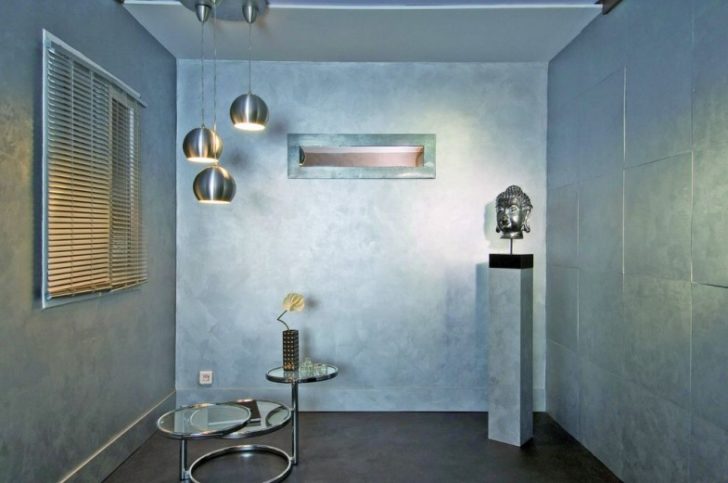
Decorative paint with metallic components
The style of any design direction can be easily conveyed when choosing a variable decorative paint. In addition to an unsurpassed textural effect, they have impeccable performance properties: shape and color stability, regardless of the influence of moisture, light and slight mechanical stress.
Having learned the unique features of decorative paint and the basics of painting skills, you can not only create an exclusive picture of the interior in any room, but also forget about repairs for a long time. The spectacular appearance of the walls will delight those around them with their original state for a long time and surprise guests with the creativity of the original painting.
back to index ↑Photo gallery - decorative wall paint
Video
